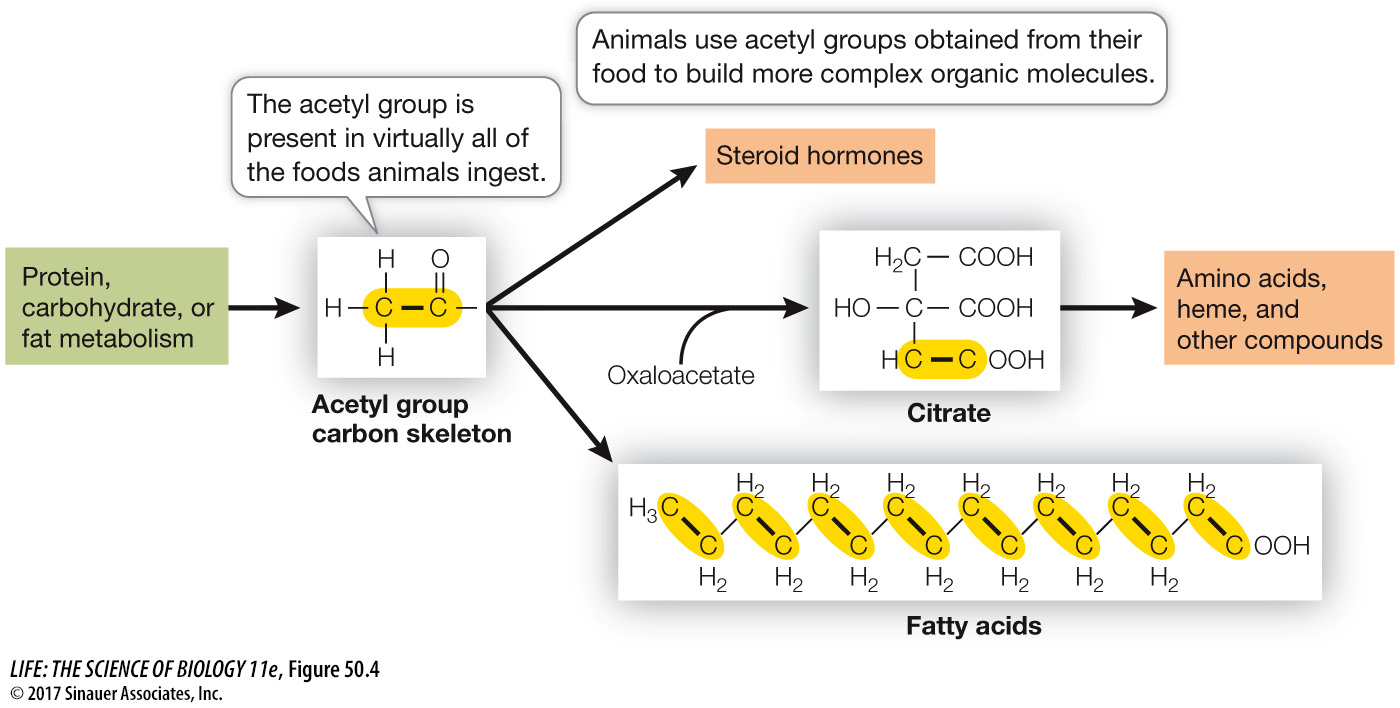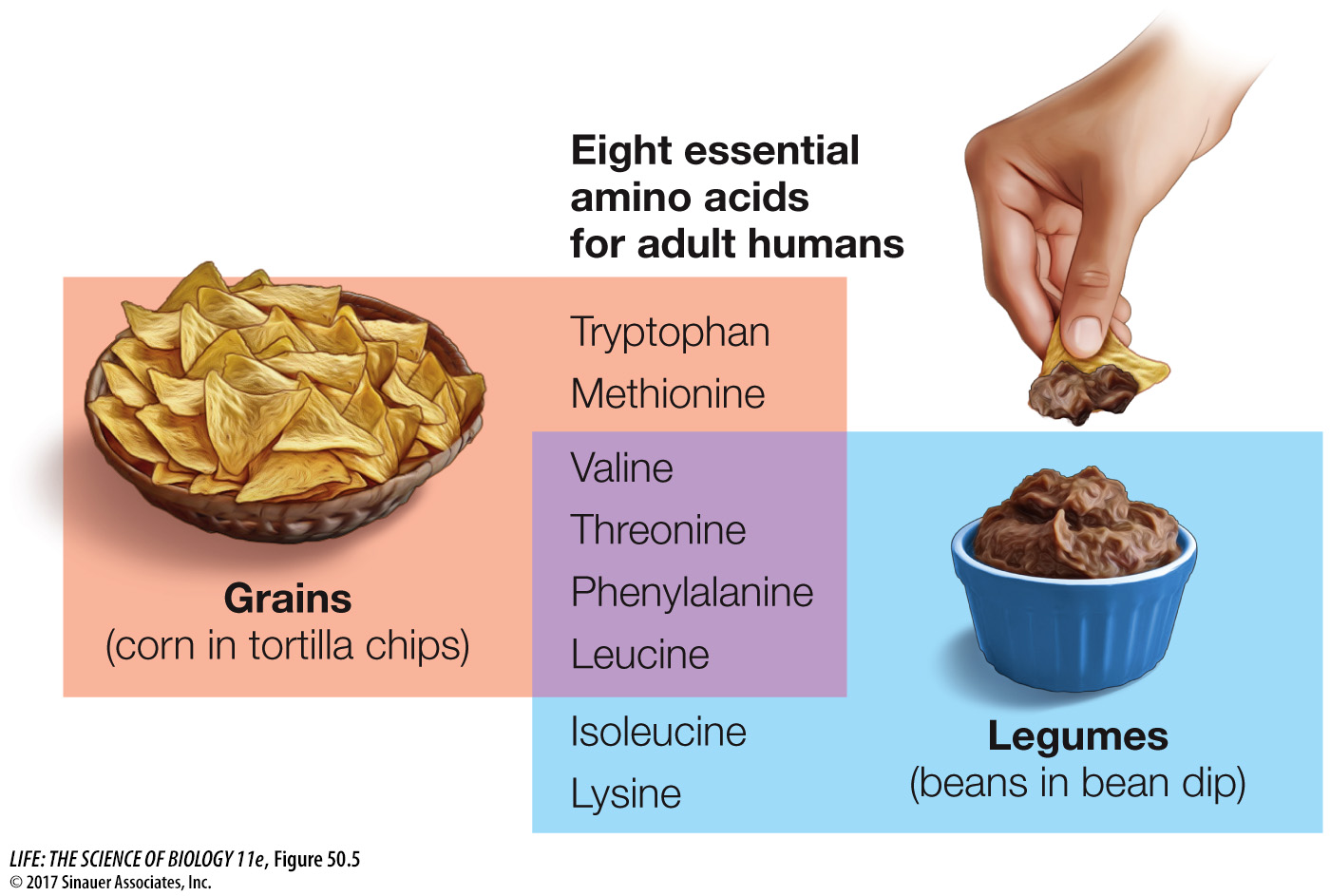Food provides carbon skeletons for biosynthesis
Every animal must take in certain organic molecules that it cannot synthesize for itself but needs to form the building blocks of its own complex organic molecules. The acetyl group (CH3CO—

Acetyl groups are never in short supply for an adequately nourished animal. However, some groups supplying carbon skeletons can be deficient in an animal’s diet even if caloric intake is adequate. One such group includes certain amino acids, the building blocks of proteins. Animals can synthesize some of their own amino acids using carbon skeletons from acetyl or other groups and transferring to them amine groups (—NH2) derived from other amino acids. However, most animals cannot synthesize all the amino acids they need and thus must obtain certain essential amino acids from food. If an animal does not take in enough of even one of its essential amino acids, its protein synthesis is impaired and its capacity to maintain enzymatic and transport functions is challenged.
Essential amino acids vary by species. Most researchers agree that adult humans must obtain eight essential amino acids from their food: isoleucine, leucine, lysine, methionine, phenylalanine, threonine, tryptophan, and valine. All eight are available in milk, eggs, meat, and soybean products, but most plant foods do not contain adequate quantities of all eight, so a strict vegetarian diet carries a risk of protein malnutrition. A complementary diet of plant foods, however, supplies all eight essential amino acids (Figure 50.5). In general, grains (such as rice, wheat, and corn) are complemented by legumes (such as beans and peas). Long before the chemical basis for complementarity was understood, societies with little access to meat developed complementary diets. Many Central and South American peoples traditionally eat beans with corn, and the native peoples of North America complemented their beans with squash.

Human infants are thought to require four additional amino acids in their diets: histidine, tyrosine, cysteine, and arginine. Also, some amino acids are required by individuals with certain metabolic disorders who cannot synthesize them adequately. For example, individuals with the genetic disease phenylketonuria lack the enzyme for converting phenylalanine to tyrosine (see Key Concept 15.2) and must obtain tyrosine from their diets. They must keep their dietary intake of phenylalanine low to prevent its accumulation to toxic levels.
Why are dietary proteins completely digested to their constituent amino acids before being used by the body? Wouldn’t it be more energy-
Macromolecules such as proteins are not readily absorbed by the cells of the gut, but their constituent monomers (such as amino acids) are readily absorbed.
Page 1072Protein structure and function are highly species-
specific. A protein that functions optimally in one species might not function well in another. Foreign proteins entering the body directly from the gut would be recognized as invaders and would be attacked by the immune system.
Humans can synthesize almost all the lipids required by the body using acetyl groups obtained from food (see Figure 50.4), but we must have a dietary source of two essential fatty acids—linoleic acid and alpha-